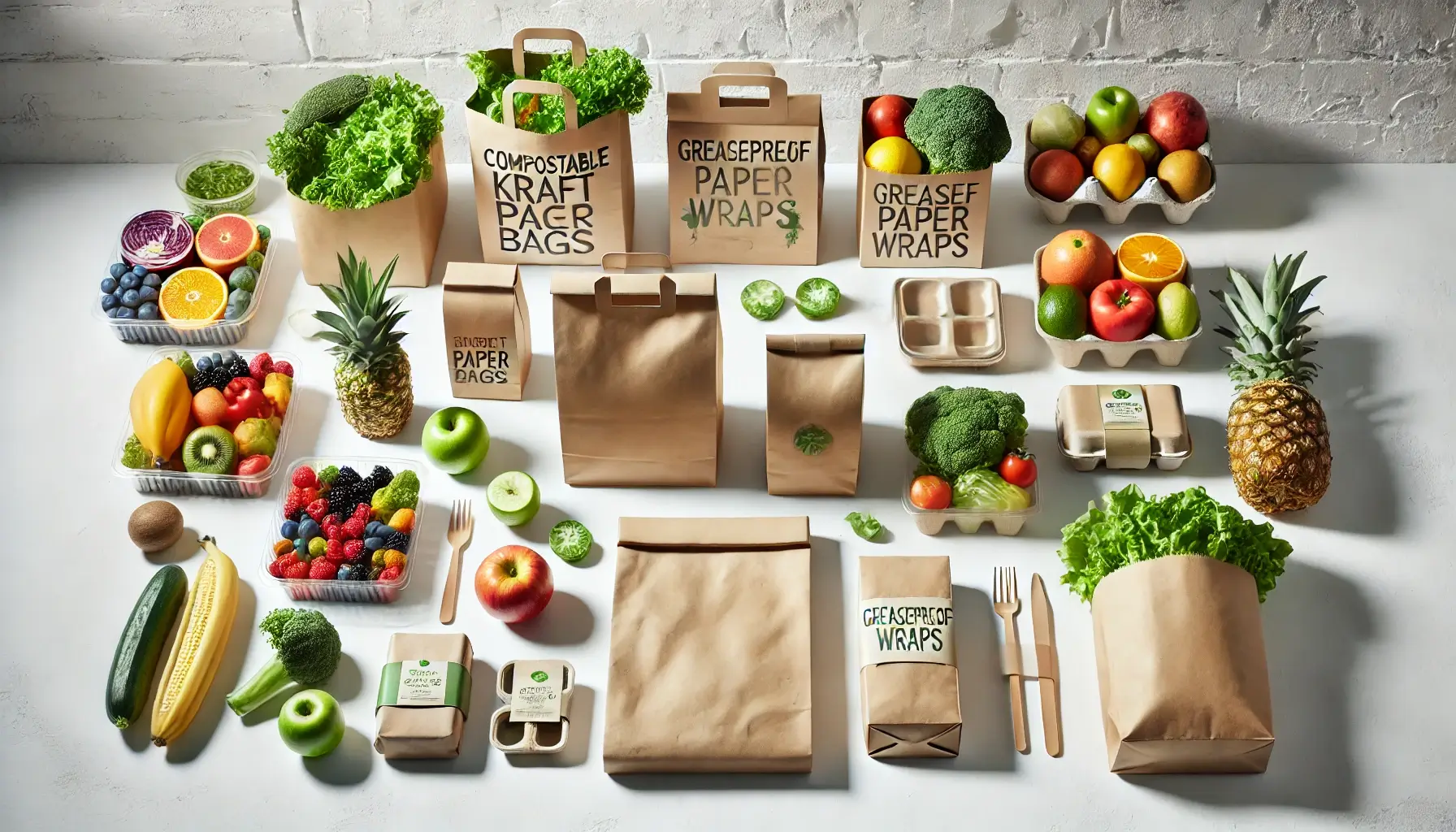Walking through the aisles of your local supermarket, you might notice something changing. The shiny plastic wrappers and non-recyclable containers are gradually giving way to earthy tones and materials that feel more natural. This isn’t just a trend—it’s a transformation in the food packaging industry driven by sustainability.
The Environmental Cost of Convenience
For years, the convenience of single-use plastics has come at a significant environmental cost. According to the World Economic Forum, approximately 8 million tons of plastic waste enter the oceans each year. Much of this comes from food packaging, which often ends up in landfills or pollutes natural habitats due to its non-biodegradable nature.
Marine life suffers greatly from plastic pollution, with countless species ingesting or becoming entangled in plastic debris. The impact on ecosystems is profound, prompting urgent calls for change.
A Shift Towards Sustainability
Recognizing the critical need to address plastic pollution, companies worldwide are adopting eco-friendly packaging solutions. This shift is driven by environmental concerns and changing consumer preferences.
Real-World Innovations
Tetra Pak, a leader in food processing and packaging solutions, has been pioneering sustainable packaging. They’ve developed cartons made primarily from paperboard sourced from responsibly managed forests. These cartons are recyclable and have a lower environmental impact compared to traditional packaging.
Loop, a circular shopping platform launched by TerraCycle, partners with brands like Nestlé and Procter & Gamble to offer products in reusable containers. Customers purchase products in durable packaging that can be returned, cleaned, and refilled, reducing reliance on single-use packaging.
Notpla, a start-up based in the UK, has developed packaging made from seaweed and plants. Their innovative materials are biodegradable and can decompose naturally, offering an alternative to plastic.
Legislative Support
Governments are playing a crucial role in this shift. The European Union implemented the Single-Use Plastics Directive in 2021, banning certain single-use plastic items and encouraging the use of sustainable alternatives. Similarly, countries like Canada have announced plans to ban harmful single-use plastics, pushing the industry towards eco-friendly solutions.
Consumer Influence
Consumers are increasingly demanding sustainable options. A survey by IBM and the National Retail Federation found that nearly 70% of consumers in the U.S. and Canada consider sustainability when making a purchase and are willing to pay a premium for eco-friendly products.
This consumer pressure is compelling companies to innovate and adopt sustainable practices. Unilever, for example, has committed to making all of its plastic packaging reusable, recyclable, or compostable by 2025.
Benefits Beyond the Environment
Sustainable packaging offers advantages beyond environmental conservation:
- Brand Loyalty: Companies adopting sustainable practices often enjoy enhanced brand loyalty. Consumers are more likely to support brands that align with their values.
- Regulatory Compliance: Early adoption of sustainable packaging helps companies stay ahead of regulations and avoid potential fines or restrictions.
- Economic Opportunities: The shift creates opportunities for innovation and growth in new sectors, such as biodegradable materials and recycling technologies.
Overcoming Challenges
Transitioning to sustainable packaging presents challenges, including higher initial costs and the need for new technologies. However, collaboration across industries is paving the way.
The Sustainable Packaging Coalition brings together businesses, educational institutions, and government agencies to develop meaningful improvements in packaging sustainability. Through collective efforts, they address challenges and share solutions.
The Future is Sustainable
The momentum towards sustainable food packaging is undeniable. As innovations continue and consumer demand grows, eco-friendly packaging solutions are set to become the industry standard.
Companies investing in sustainable packaging are positioning themselves as leaders in an environmentally conscious market. The synergy between business success and environmental stewardship is becoming increasingly apparent.
Taking Action
Every stakeholder has a role in this transformation:
- Consumers: By choosing products with sustainable packaging and properly recycling, consumers can drive demand for eco-friendly options.
- Businesses: Companies can invest in research and adopt sustainable materials, contributing to environmental conservation and appealing to conscious consumers.
- Policymakers: Governments can support the shift through legislation and incentives that promote sustainable practices.
Conclusion
The shift towards sustainable food packaging is not just a passing trend—it’s a critical step towards preserving our planet for future generations. By embracing eco-friendly solutions, the food packaging industry is not only transforming itself but also making a significant contribution to global sustainability efforts.
As you unwrap your next snack or prepare a meal, take a moment to consider the packaging. Each eco-friendly package represents a collective stride towards a healthier planet—a small but significant part of a larger journey towards sustainability.
References:
- World Economic Forum – “The New Plastics Economy: Rethinking the future of plastics”
Link - Tetra Pak – Sustainability Initiatives
Link - Loop by TerraCycle – Reusable Packaging Platform
Link - Notpla – Seaweed-Based Packaging
Link - European Union – Single-Use Plastics Directive
Link - IBM and National Retail Federation Survey – Consumer Sustainability Trends
Link - Unilever – Sustainable Packaging Commitments
Link - Sustainable Packaging Coalition – Collaborative Industry Efforts
Link
